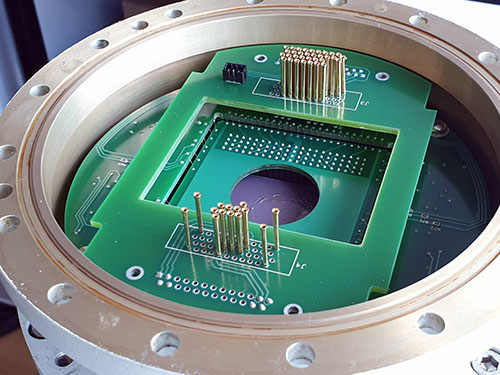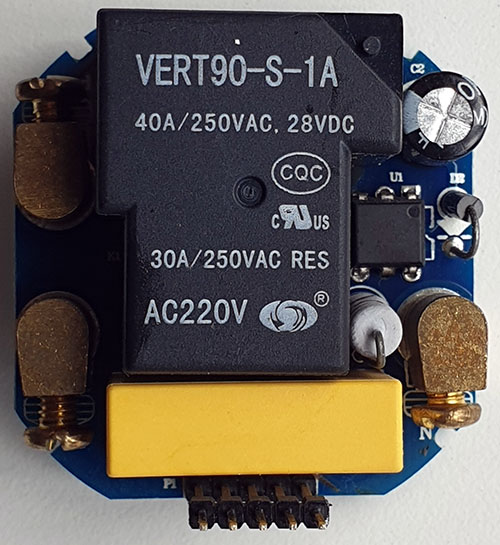Feed SparkFun Electronics [copy] http://www.sparkfun.com/feeds/news has loading error: cURL error 22: The requested URL returned error: 405
Feed The RFID Weblog [copy] http://www.rfid-weblog.com/index.rss has loading error: cURL error 22: The requested URL returned error: 404 Not Found
Feed tqfp.org [copy] http://tqfp.org/rss/ has loading error: A feed could not be found at `http://tqfp.org/rss/`; the status code is `200` and content-type is `text/html; charset=utf-8`
Name that Ware, December 2025

The Ware for December 2025 is shown below.
This is just one part of a much more complex ware, but I thought I’d throw just this photo out there for starters because it’s one of the more thought-provoking portions of the ware.
Super curious to see what people come up with! If nobody guesses it off the bat, I’ll add some more hints in a couple of weeks.
Happy holidays!
Winner, Name That Ware November 2025

The Ware for November 2025 is a controller from the card-activated power switch in a hotel room. It was on the fritz, and when the repair person came and replaced it, Sam asked for the old module and brought it to me as a name that ware entry. Here’s the other circuit board that was mated to the controller: basically a big relay that can cut power to the room when the card is pulled out.
I’ll give Greg the prize, since he was the first to basically guess the ware. However, I never considered the possibility that the snap-action switch...
Firefly CAM-3576 series – Tiny Rockchip RK3576 SBCs for commercial, industrial, and automotive applications

Firefly Technology has introduced the CAM-3576 series of tiny (38 × 38 mm) SBCs based on the Rockchip RK3576 processor with a 6 TOPS NPU for AIoT, edge AI, smart vision, industrial, and automotive applications. It comes in three variants, which include the CAM-3576Q38 (commercial), the CAM-3576JQ38 (industrial), and the CAM-3576MQ38 (automotive) modules designed for smart cameras, intelligent security systems, dash cams, and private on-device AI model deployment. The CAM-3576 series supports up to 16GB of LPDDR5 RAM, up to 256GB eMMC flash, and also includes a microSD card for expansion. Additionally, the boards feature a MIPI CSI input for...
CrowPi 3 AI Learning Kit is powered by a Raspberry Pi 5 SBC, works with Arduino Nano, BBC Micro:bit, and Raspberry Pi Pico boards

Elecrow CrowPi 3 is the latest CrowPi learning and development kit featuring 41 built-in modules and over 150 lessons, and offering compatibility with Raspberry Pi 5, Arduino Nano, BBC Micro:bit, and Raspberry Pi Pico single board computers and development boards. It follows the CrowPi portable learning kit (Raspberry Pi 3B+/Zero), CrowPi 2 Raspberry Pi 4 electronics learning laptop, and CrowPi L laptop (Raspberry Pi 4 models), but the CrowPi 3 is the first to focus on Artificial Intelligence (AI) learning with a Raspberry Pi 5 and support for LLMs like DeepSeek, Google Gemini, and OpenAI chat besides courses about electronics...
Lattice Semi MachXO4 FPGA family offers up to 9400 LUTs, 448 kb user flash, improved “hot socketing”

Lattice Semiconductor has recently launched the MachXO4 low-power FPGA family featuring 896 to 9400 LUTs, fabric performance of up to 150 MHz, and improved “hot socketing” with a low leakage current of 350 μA. Other features include up to 432 kb embedded RAM, 73 kb distributed RAM, 448 kb User Flash Memory (UFM), up to 382 I/Os, hardened SPI and I2C interfaces, a wide range of packages from 2.5×2.5mm to 20 x 20 mm, and three temperature grades (consumer, industrial, and automotive). Lattice Semi MachXO4 key features and specifications: FPGA Fabric 896 to 9400 LUTs 1,100 to 11,300 logic cells...
4-inch round HDMI display offers USB touchscreen for Raspberry Pi, AIDA64, Smart Home, Art projects

VIEWE has launched a 4-inch round HDMI display with 720×720 resolution, and a USB touchscreen function suitable for SBCs like the Raspberry Pi, PCs running AIDA64, Smart Home applications, and Art projects. It looks to build upon the company’s 4-inch square HDMI display using the same control board with a MIPI DSI display interface, HDMI 1.4 input, and a USB Type-C port for power and touch input. VIEWE 4-inch HDMI round display specifications: Display 4-inch round HDMI IPS display with 720×720 resolution ST7703 display driver Brightness – 300 cd/㎡ Active area – 101.52mm ∅ Touchscreen – 5-point capacitive touch screen...
Auvidea X242 – An NVIDIA Jetson Thor T5000 industrial carrier board with dual 10GbE, PCIe x16, CSI-2 camera support

Auvidea X242 is an industrial carrier board for NVIDIA’s Jetson Thor T5000 module, targeting edge AI, robotics, vision, and high-bandwidth embedded systems, mainly in industrial and high-performance commercial applications. The board supports dual 10GbE, PCIe x16 expansion, NVMe storage, 4G LTE/5G M.2, up to four displays through HDMI and DisplayPort Alt Mode over USB-C (rev 3), and multiple cameras through a 16-lane CSI-2 camera connector. The carrier board supports a wide 24–48 V power input with power modes up to 120 W. Industrial features include hot-swap control, reverse and over-voltage protection, and backward compatibility with earlier Auvidea Jetson platforms. Auvidea...
HackyPi 2.0 hacking tool gets ESP32-S3 for Wi-Fi and Bluetooth connectivity (Crowdfunding)

HackyPi 2.0 is an ESP32-S3-based USB hacking and automation tool designed for both coders and non-coders. It features AI-assisted control, HID keystroke injection, BadUSB, and a no-code interface for learning, automation, ethical hacking, and overall system interaction. Compared to the original Raspberry Pi RP2040-based HackyPi, the HackyPi 2.0 adds Wi-Fi and Bluetooth connectivity, remote access, AI integration, and automatic OS detection, making it far more flexible. It keeps support for BadUSB and HID keystroke injection and also adds features such as mouse jiggler mode, child-safety website blocking, RGB status lighting, and LVGL-based UI support. Everything can be controlled through a...
CrowPanel Advanced 7inch Review – Part 1: ESP32-P4 HMI AI display hands-on with LVGL factory firmware

Elecrow has sent us a sample of the “CrowPanel Advanced 7inch” ESP32-P4 HMI display for review. It is designed for high-performance AI and IoT (AIoT) applications with a 2MP camera module, an ESP32-C6-MINI-1 module for Wi-Fi 6, Bluetooth 5.3, and 802.15.4 (Zigbee, Thread, Matter) connectivity. Our kit also shipped with three wireless modules, namely an ESP32-H2 wireless module for an additional Thread, Zigbee, and Matter radio, an SX1262 module for LoRa low-power long-range connectivity, and an nRF2401 2.4 GHz wireless module. In the first part of the review, we will take you through an unboxing of the CrowPanel Advanced 7-inch,...
NIST was 5 μs off UTC after last week's power cut
NIST was 5 μs off UTC after last week's power cut
If you were 5 microseconds late today, blame it on NIST.
Their facility in Boulder Colorado just had its power cut for multiple days. After a backup generator failed, their main ensemble clock lost track of UTC, or Universal Time Coordinated.
But even if you used the NTP timing servers they run, they were never off by more than 5 microseconds.
5 μs might seem insignificant. But it is significant for scientists and universities who rely on NIST's more specialized timing...